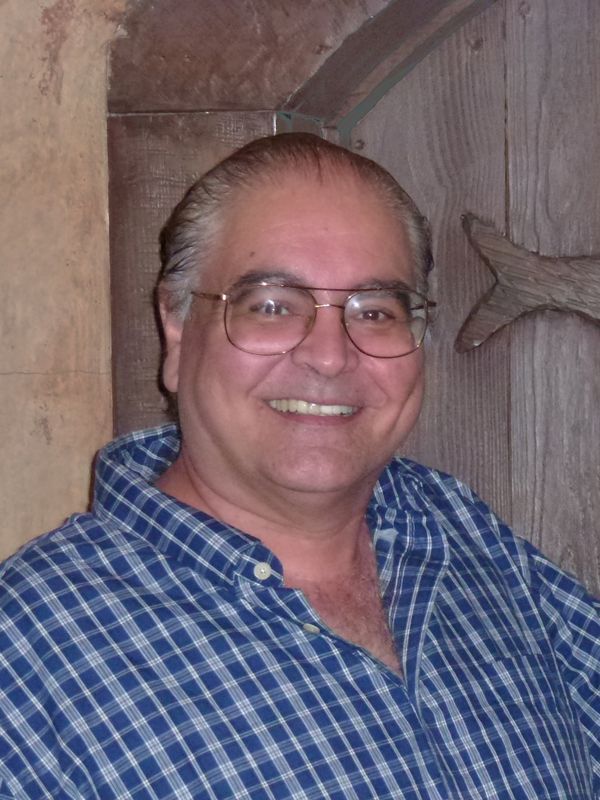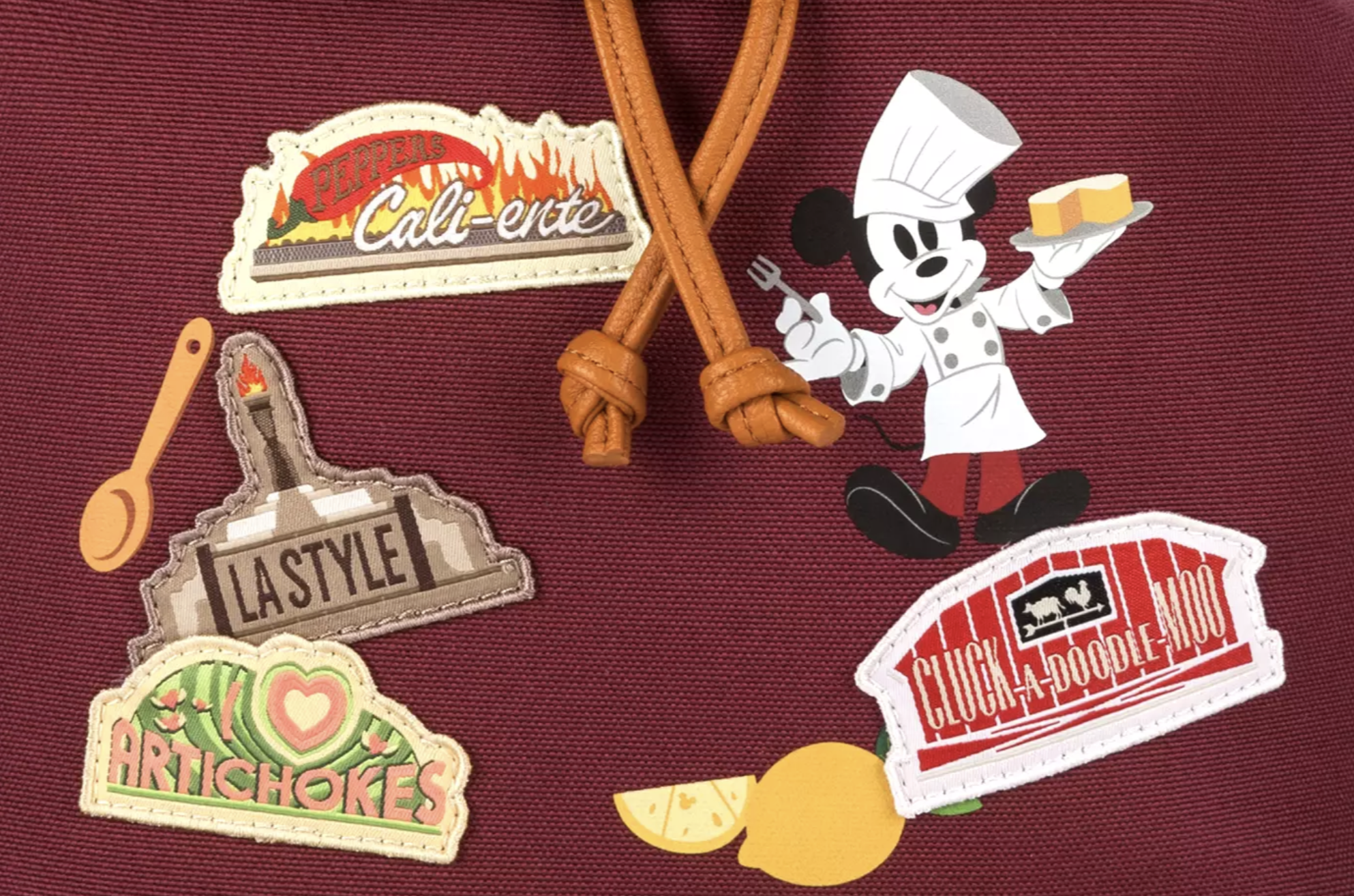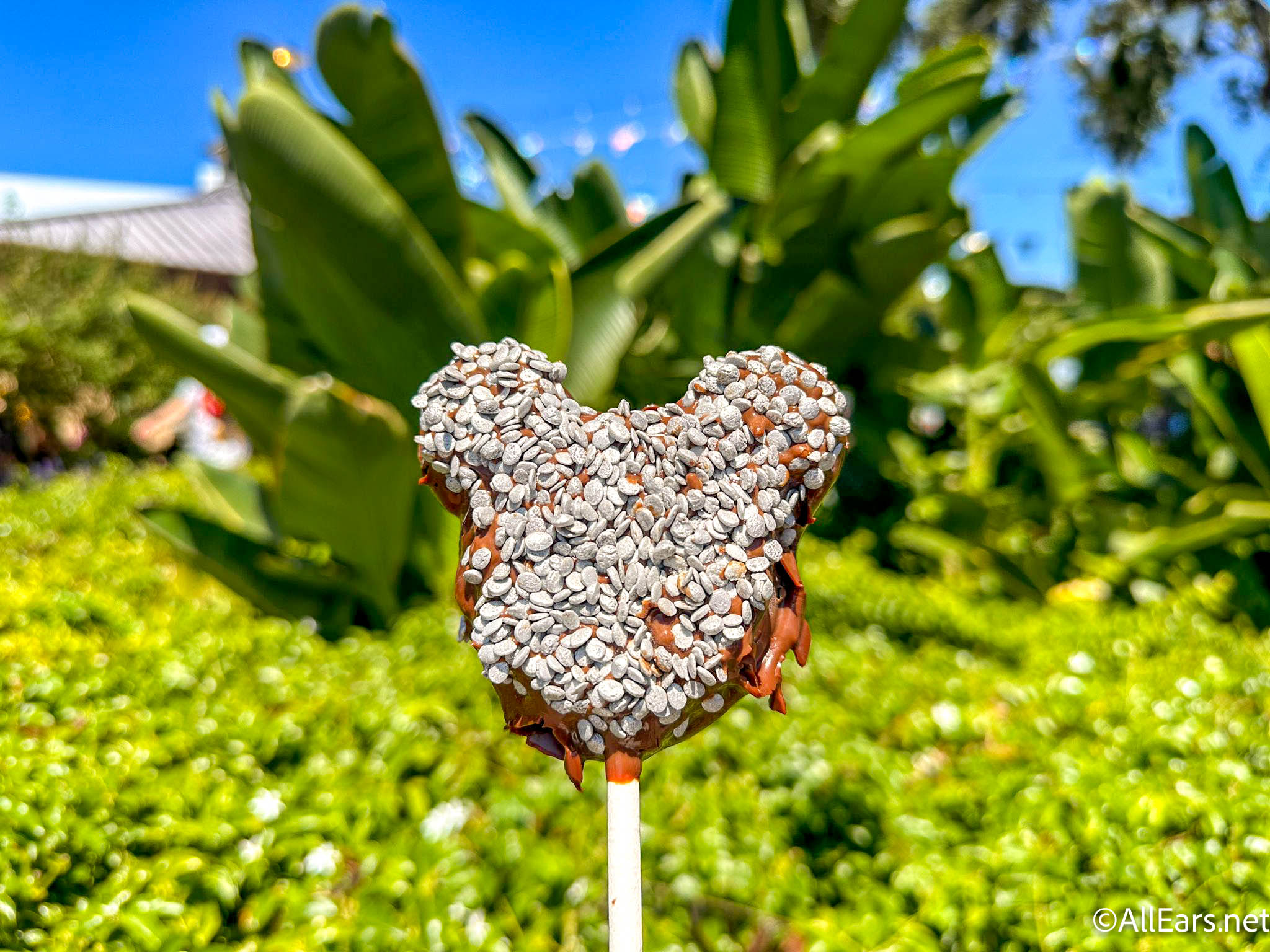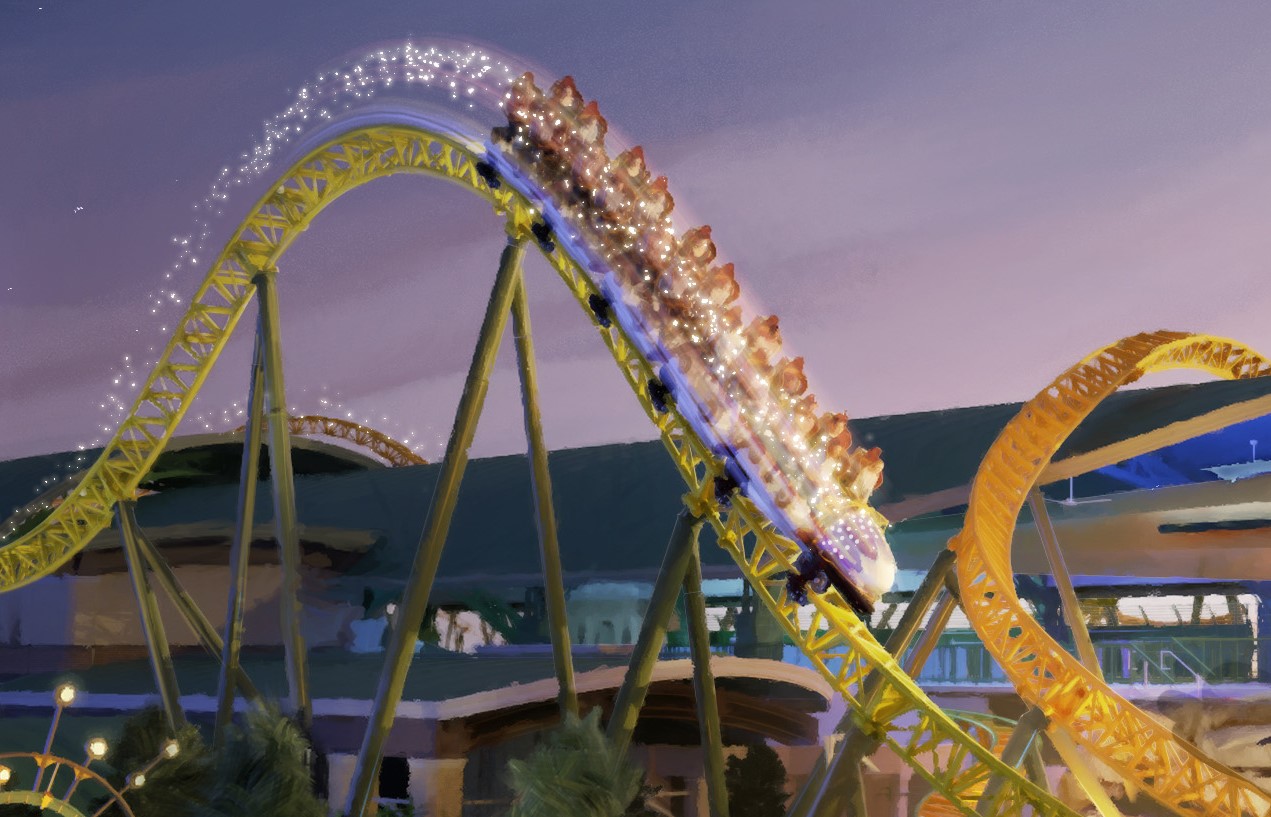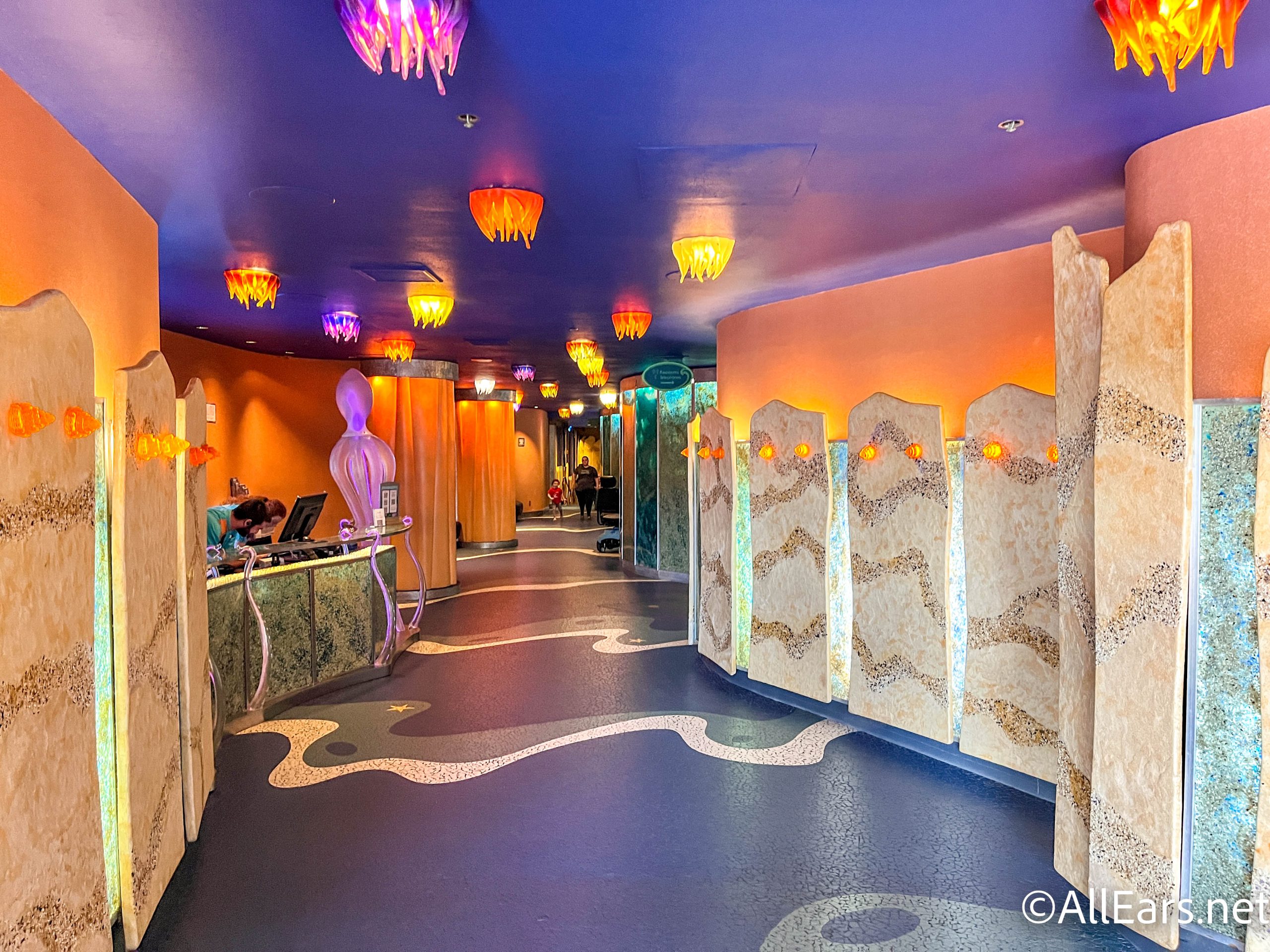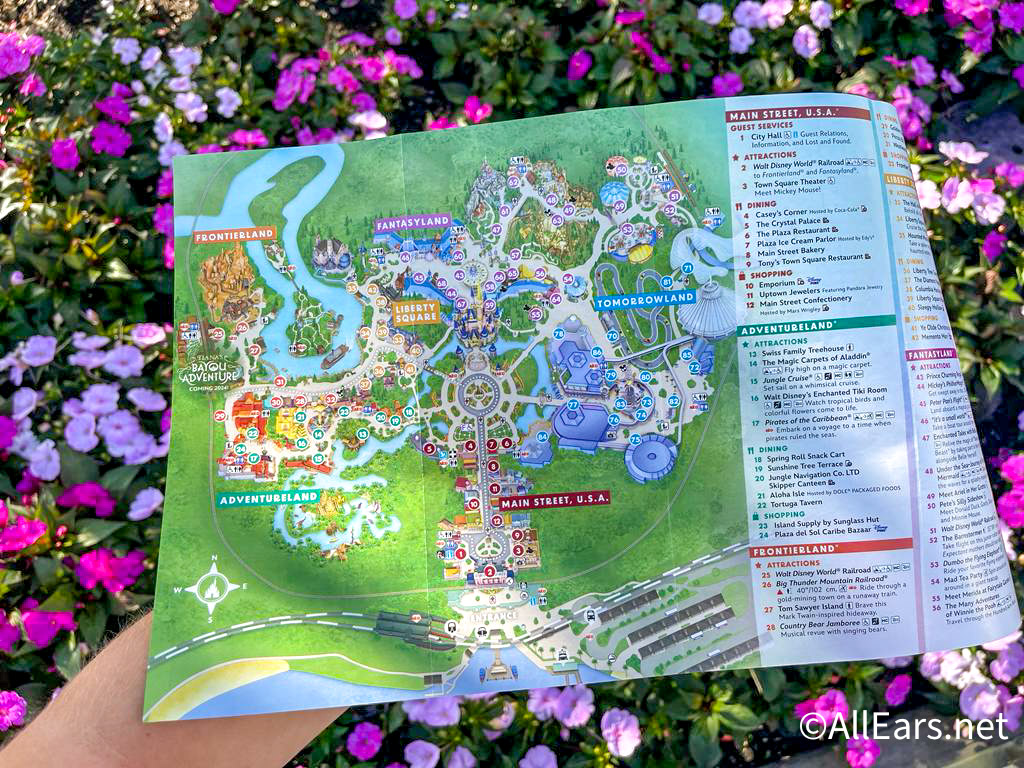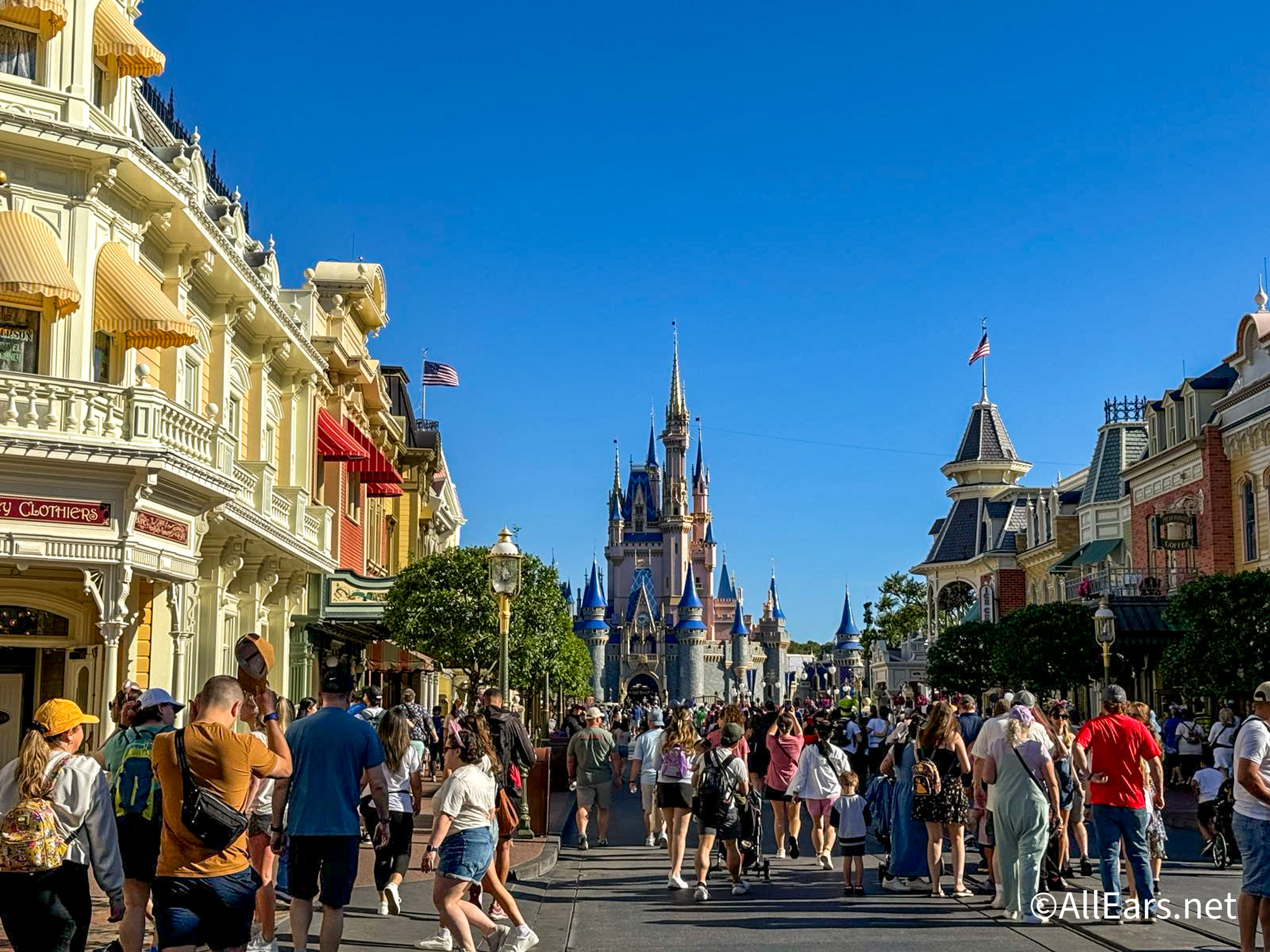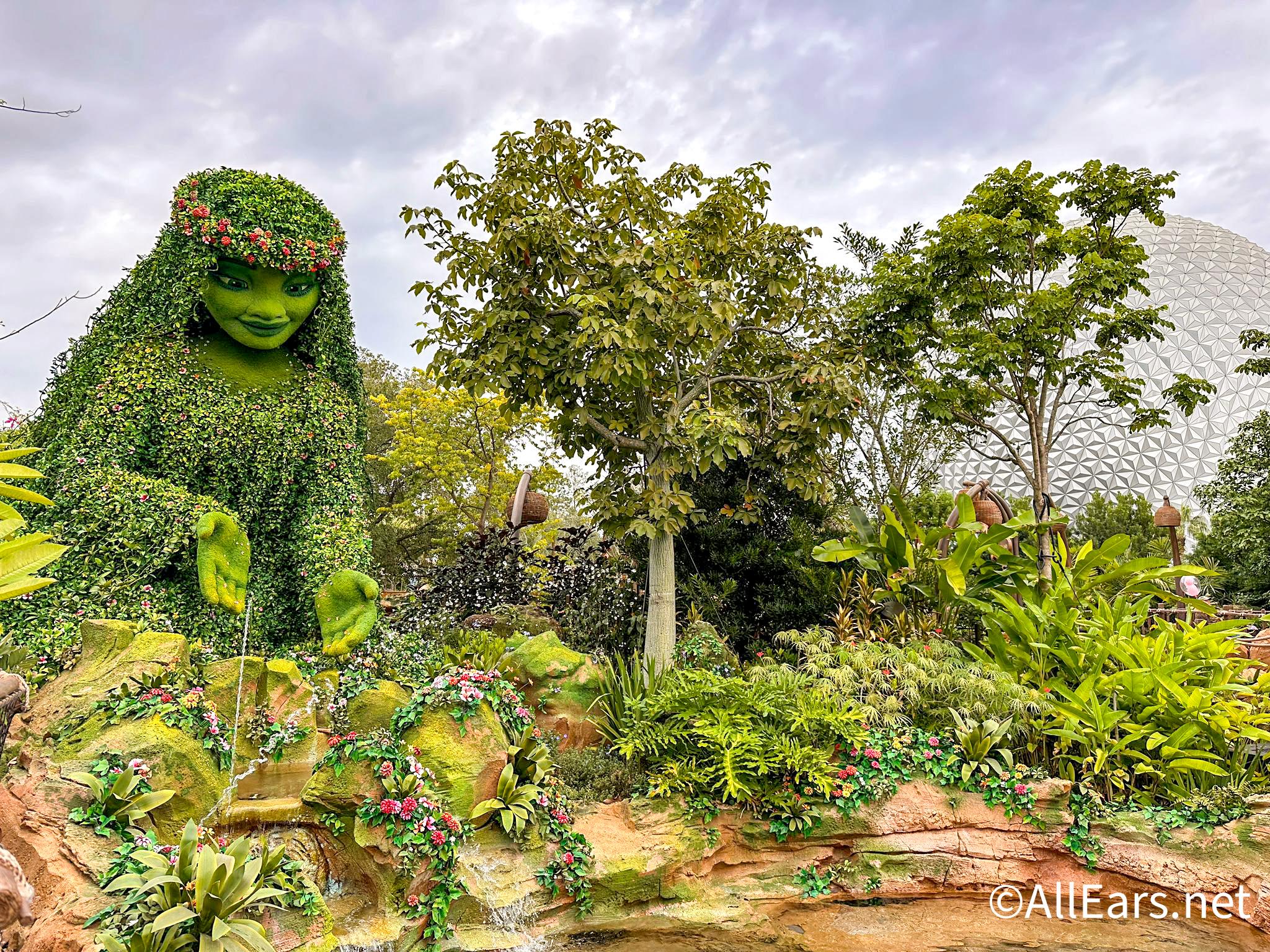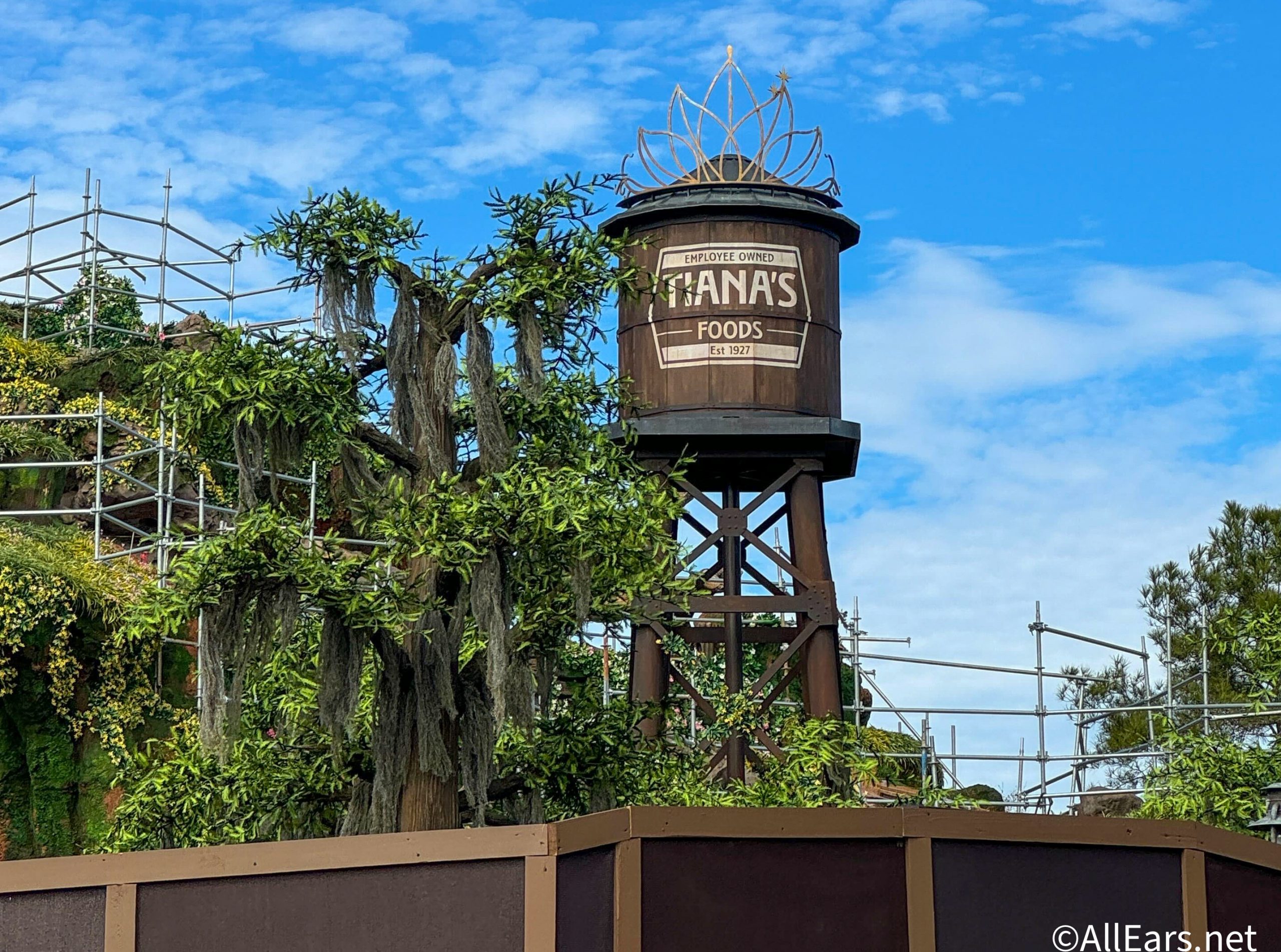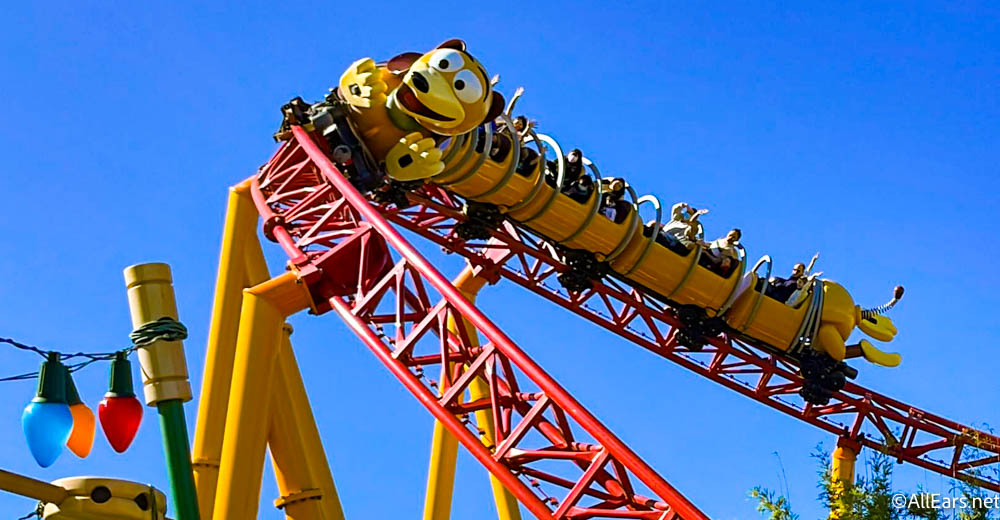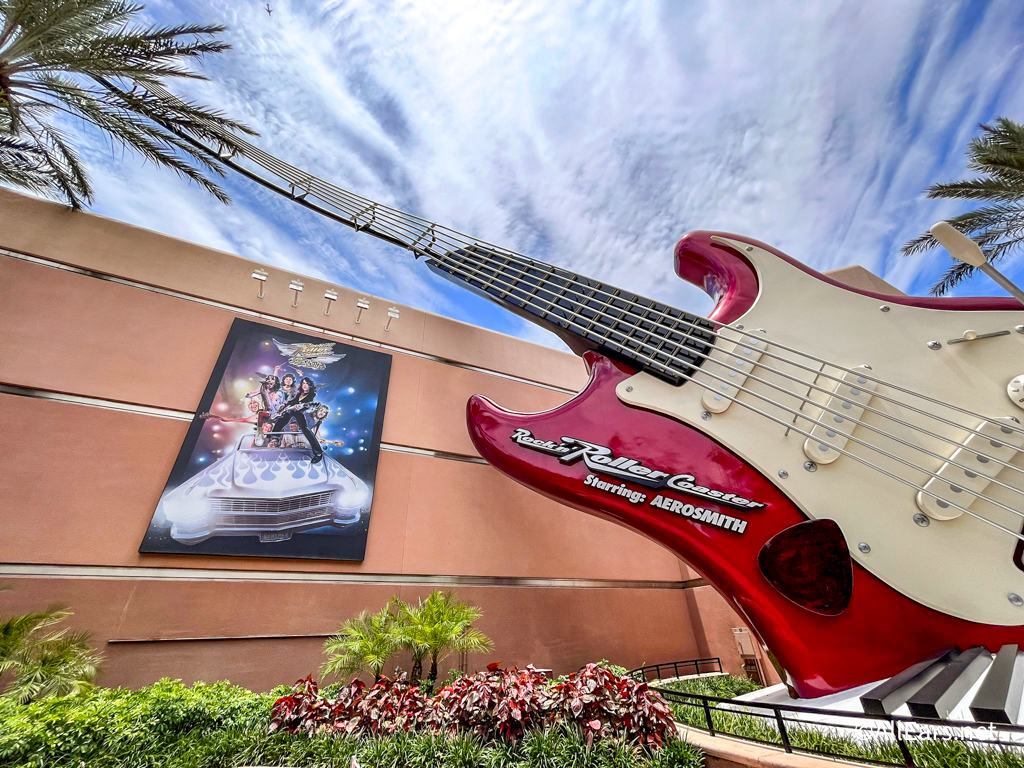WDW Chronicles: Fort Wilderness Railroad
by Jim Korkis
Disney Historian
Feature Article
This article appeared in the April 7, 2015 Issue #811 of ALL EARS® (ISSN: 1533-0753)
Editor's Note: This story/information was accurate when it was published. Please be sure to confirm all current rates, information and other details before planning your trip.
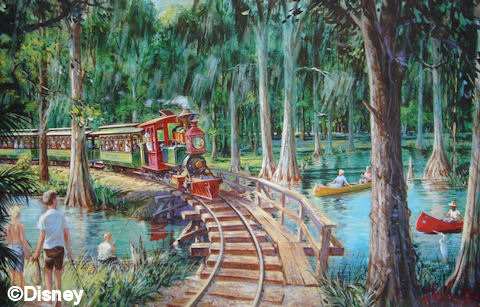 The Fort Wilderness Resort and Campground was the only Disney resort that ever had its own attraction: The Fort Wilderness Railroad. It lasted roughly six years and one month, and images of it in operation appeared on magazines, guides and posters.
The Fort Wilderness Resort and Campground was the only Disney resort that ever had its own attraction: The Fort Wilderness Railroad. It lasted roughly six years and one month, and images of it in operation appeared on magazines, guides and posters.
It provided a charming form of transportation around the campground and in its heyday was the preferred method of transportation to visit the River Country water park. The Fort Wilderness Resort also included trams and buses as transportation.
February marked the 25th anniversary of this beloved steam-powered ride disappearing from Walt Disney World. It officially ceased operation in February 1980 when cast members and guests were told it was going on a six-week hiatus.
But believe it or not, the Fort Wilderness Railroad still exists… just not in Florida, and not in its original format.
Over the years of its operation, there were rumors of problems with its operation, but extensive investigation in later years has shown those challenges to be minimal. Unfortunately, a major mistake in the original laying of the track is what doomed the quaint rustic train.
The railroad consisted of four steam trains, each pulling five cars, around a circular route through the campground at a maximum speed of 10 miles an hour. Each engine ran on steam and used diesel fuel to stoke the fire. The track was approximately twice the length of the track at the Magic Kingdom.
This strikingly beautiful train was decorated in a strong color palette of forest green, red and gold. Imagineer Bob McDonnell created that color scheme along with the distinctive logo, detailing and enticing poster.
A single train was roughly about 115 feet long and could seat up to 90 guests. During the peak period when River Country was operating, all four trains operated every day to accommodate the guest demand.
The trains were smaller than the ones at the Magic Kingdom and were based on the traditional Baldwin "plantation locomotives" popular in the Hawaiian islands, where they were used to haul material like sugar cane and pineapples through the jungles to market. The smaller gauge made the trains more effective in negotiating tight curves. Unlike the Magic Kingdom's train, however, the track was near guest activity. This prompted some safety concerns, especially since it was difficult to stop an engine quickly in the case of an emergency.
During 1972, the locomotives were built in Glendale, California, by WED (Imagineering) and its manufacturing arm MAPO at a reported cost of more than $1 million
At the same time, Buena Vista Construction was installing the track at the campground to save both time and money. Unfortunately, the company had never laid train track before in the sandy soil of Florida and mistakes were made, including lack of gauge rods and tie plates, incorrect placement of ballast, rails not curved with a rail-bender and the wrong size rail.
The trains were shipped by flatbed trucks to Walt Disney World during the spring of 1973 and went through a trial and adjustment period during which guests were sometimes able to ride the trains. By late November, the trains started running on a fairly regular schedule in what was considered a "soft opening."
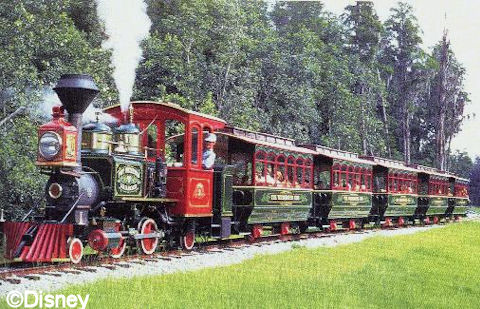 The official opening and dedication ceremony was January 1, 1974 Mickey and Goofy, along with the WDW Ambassador, drove a "golden spike" into the rails to declare the train line operational for all guests.
The official opening and dedication ceremony was January 1, 1974 Mickey and Goofy, along with the WDW Ambassador, drove a "golden spike" into the rails to declare the train line operational for all guests.
Originally, the train was free for guests staying at Fort Wilderness, while others (including guests staying at other WDW resorts) were charged 50 cents per day (two cents of that was for taxes). That fee increased in later years to a dollar.
The Fort Wilderness Railroad stopped operation simply because the track had not been installed correctly. Despite attempts to do some patchwork fixes over the years, challenges kept occurring.
Dick Nunis, who was in charge of Walt Disney World operations, loved the idea of the railroad and did everything he could to save it. In February 1980, he decided to put the railroad on a six-week hiatus to assess the situation. The crew members who worked the trains were assigned to other jobs at Fort Wilderness. Some were even placed in roles outside the resort. All were told that the reassignments were temporary.
Engine #1 (the engines were numbered and not named, unlike every other Disney railroad engine) was moved backstage to Central Shops for restoration with. Among other things, the intricate artwork was repainted. The other engines remained in the roundhouse to await their turn.
The old roundhouse is located in the service area behind the front stables and the current Outpost Depot. It is a square building with four large doors, and was used for landscaping equipment repair and golf cart repair a few years after the railroad ceased operation Eventually, it was converted into a laundry facility
The railroad equipment was moved out in front of the roundhouse around 1982 and then years later to a warehouse area, where it was once again stored outside, subject to the damaging Florida weather, which caused the equipment to slowly deteriorate.
Nunis attempted to find a corporate sponsor for the railroad to help offset the costs for needed repairs and maintenance. General Electric, which had sponsored the fabled Carousel of Progress at the Magic Kingdom, was approached but the company decided to invest its money instead in an attraction for the soon-to-open Epcot theme park called Horizons.
Failing to find a sponsor, Nunis looked at the estimate to remove the existing track and install a new track that was properly laid to compensate for challenges like sinkage. The cost was reportedly more than $3 million.
Even though a nominal fee was charged to ride the train, it did not generate enough income to maintain the attraction
At this time, Disney was involved in building Epcot, the largest privately financed construction project in the world, and costs were already starting to spiral out of budget. The Fort Wilderness Railroad was not a priority and all refurbishment of the equipment immediately stopped
After the opening of Epcot, Nunis brought out to Florida the Nature's Wonderland trains from Disneyland that were no longer in use because they had been removed to make way for Big Thunder Mountain Railroad
These were battery-powered, so would save fuel costs and had proven dependability. Unfortunately, the train was much too slow on its trial run around the campground and the plan was abandoned.
The idea of a Fort Wilderness Railroad came to life again in 1992 with the announcement of the building of Buffalo Junction (sometimes referred to as Wilderness Junction), an area between Fort Wilderness Resort and Wilderness Lodge, which would have been an upscale resort themed to the Old West of Dodge City. (Recently, this concept has come up for discussion as a possible Disney Vacation Club resort.) The train would have connected all three resorts
In 1995, Disney Legend Ward Kimball, who loved trains, discovered that the Fort Wilderness engines and cars were rotting away at Walt Disney World Working with the Carolwood Pacific Historical Society, negotiations began with Disney to purchase the equipment for private collectors.
The negotiations took five years. Disney finally agreed to the arrangement in the year 2000 thanks to the efforts of a number of people, including Michael Broggie, Jane Alcorn and Marty Sklar
While some of the track (for instance, along the south end of the Chicasaw Creek) and the roadbed can still be located by diligent searchers today, most of the layout is just a memory with more disappearing each year. In 1983, road grade crossings were paved and track removed and stored.
The 20 passenger coach cars found new uses as well.
In 1986, four of the coach cars and roughly three thousand feet of railroad track were donated to the Brevard Zoo in Melbourne, Florida, but by the late 1990s were decaying in a back area of the zoo
Around 2008, Bob Kelso purchased one of the cars and refurbished it. He mounted the car on a trailer and displayed it at parades and special events including one at Fort Wilderness. In 2011, he sold the car to a family in Wisconsin.
Two of the cars were donated to a Florida preschool.
Two of the passenger cars were used for ticket booths at Pleasure Island for a time to save costs, but were eventually replaced with permanent ticket booths. One of these ticket booths was moved to the Typhoon Lagoon parking lot at some point, where it remains today. The other was auctioned off.
Before selling any of the Fort Wilderness Railroad equipment, Disney took power sanders to remove all the graphics from the engines and coaches, grinding off all Fort Wilderness Railroad and Walt Disney World logos. In the process, Ward Kimball's signature was discovered on the undercoat of one of the engine cabs.
The purchasers of the engines were all Carolwood Pacific members: Michael Campbell, Bill Dundas and Jim Zordich. Zordich later sold his engine and coach cars to John Lasseter for his backyard railroad in Sonoma, California.
In the tradition of Disney animators like Ollie Johnston and Ward Kimball, Lasseter has his own train displays and working railroad in his backyard.
Lasseter owns Disney Legend Ollie Johnston's "Marie E." locomotive (and Lasseter uses an image of that engine on his wine label) that Johnston used to operate in his own backyard, as well as Ward Kimball's train station Lasseter has changed the original gauge of the Fort Wilderness engine from 30" to 36" (the same gauge as the Walt Disney World railroad).
Even though the contract to purchase the engines and cars expressly forbade rebuilding them to operating condition (a standard part of contracts involving the sale of Disney vehicles), three of the four engines have been made operational. One engine with a coach car has been made a static display and all engines are now in California.
I never had an opportunity to ride the Fort Wilderness Railroad during its handful of years of operation, but I hope readers will share their memories
The small railroad was truly a hidden treasure in the early days of Walt Disney World and brought joy to many guests. Even a quarter of a century after its disappearance, the memory of it brings smiles to the faces of those guests who got a chance to ride it.
= = = = = = = = = = = = =
RELATED LINKS & VIDEO
= = = = = = = = = = = = =
VIDEO: Carolwood Pacific Room at Villas at Wilderness Lodge
Other features from the Walt Disney World Chronicles series by Jim Korkis can be found in the AllEars® Archives.
Jim also writes occasionally for the AllEars® Guest Blog, contributing entries under the heading of "Jim's Attic."
-=-=-=-=-=-=-=-=-=-=-
Disney Historian and regular AllEars® Columnist Jim Korkis has written hundreds of articles about all things Disney for more than three decades. As a former Walt Disney World cast member, his skills and historical knowledge were utilized by Disney Entertainment, Imagineering, Disney Design Group, Yellow Shoes Marketing, Disney Cruise Line, Disney Feature Animation Florida, Disney Institute, WDW Travel Company, Disney Vacation Club and many other departments.
He is the author of several books, available in both paperback and Kindle versions. You can purchase them via our AllEars.Net Amazon.com store HERE.
-o-o-o-o-o-o-o-o-o-o-o-
Editor's Note: This story/information was accurate when it was published. Please be sure to confirm all current rates, information and other details before planning your trip.

